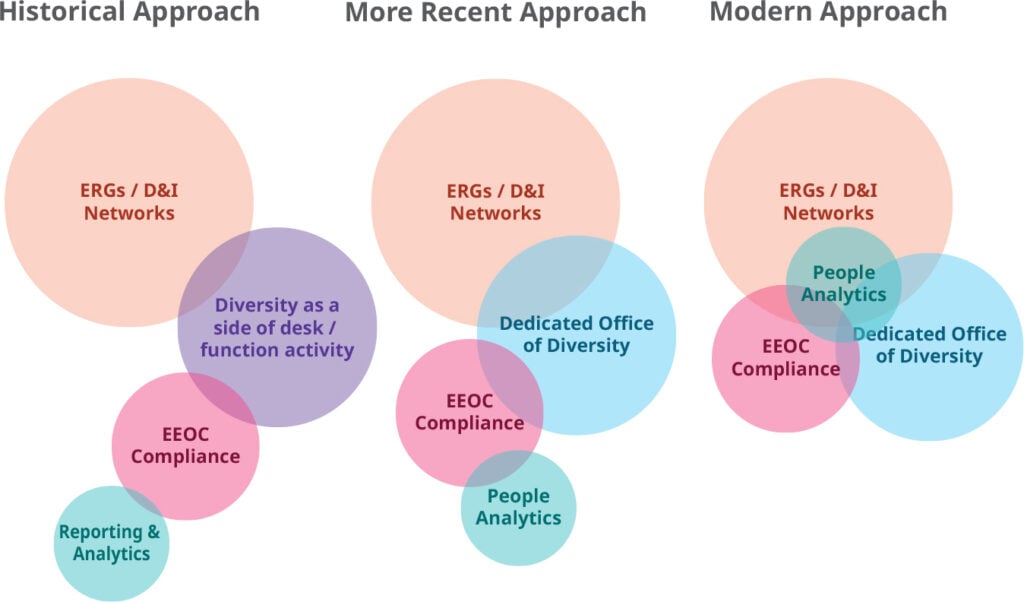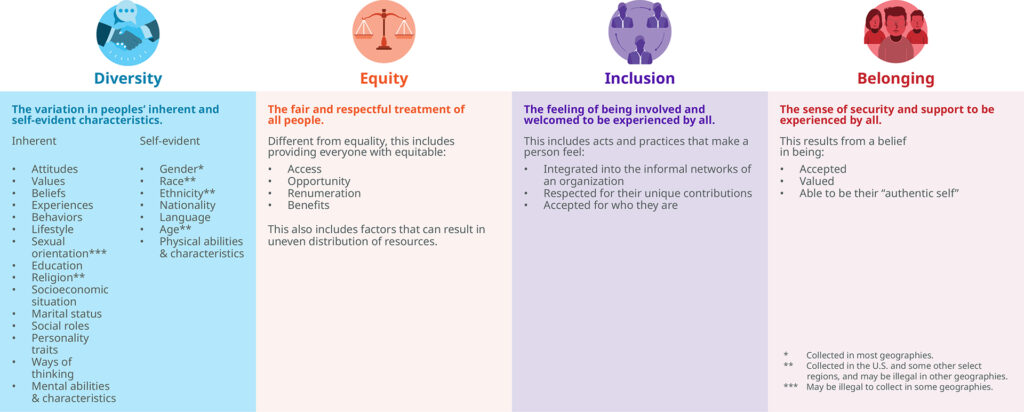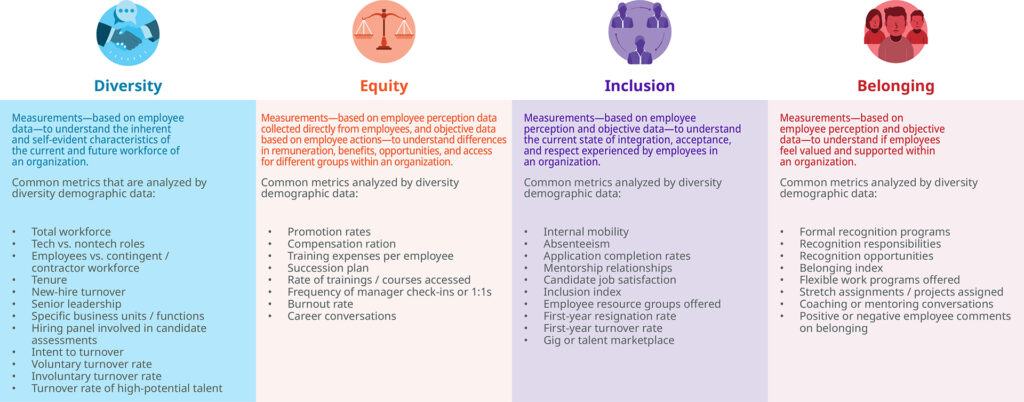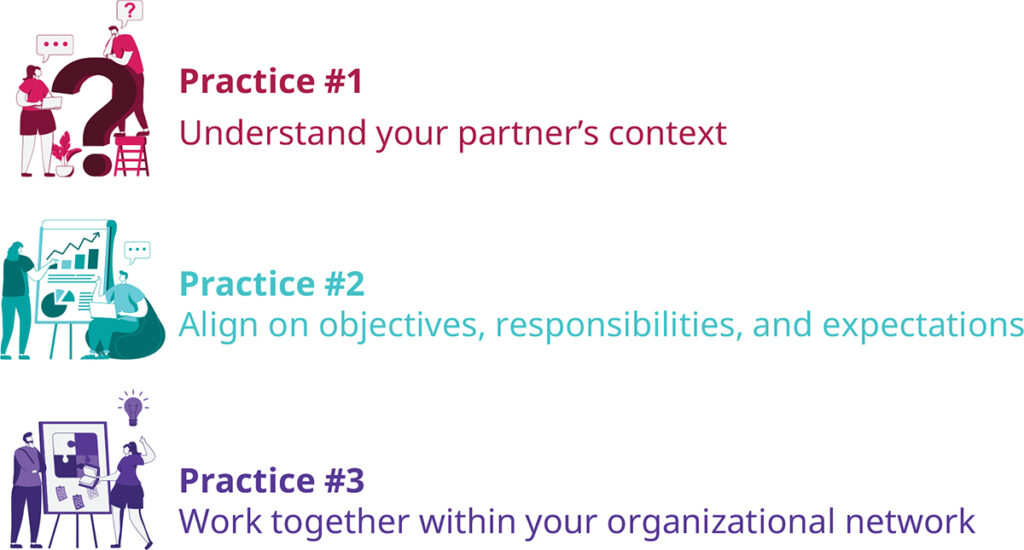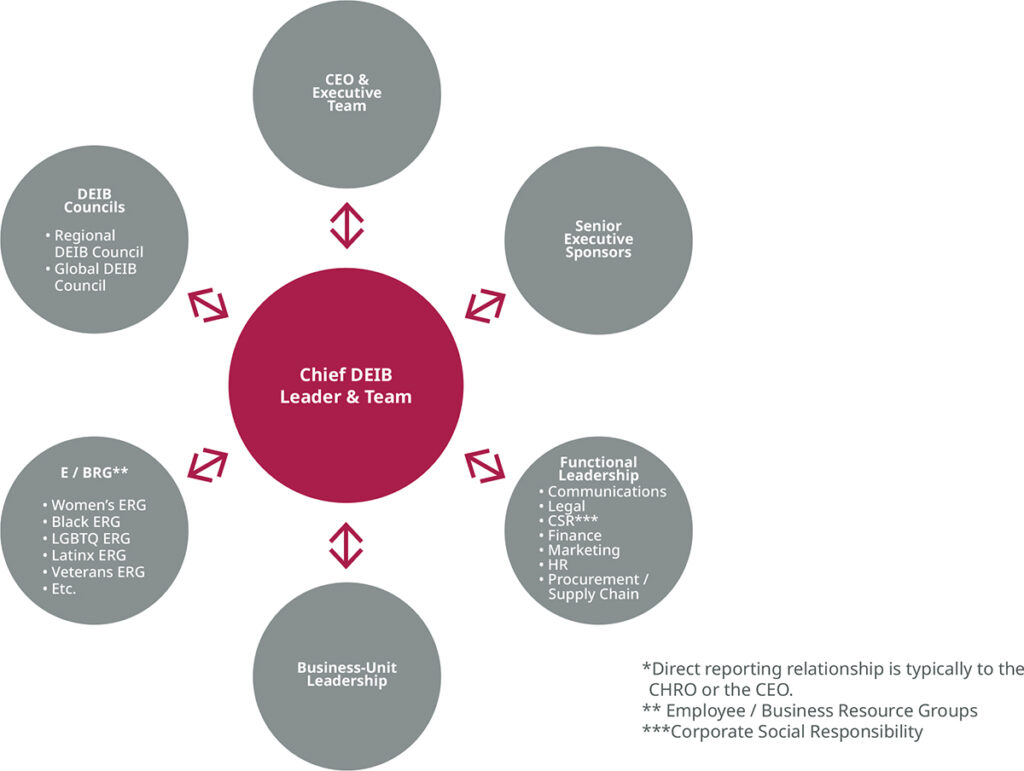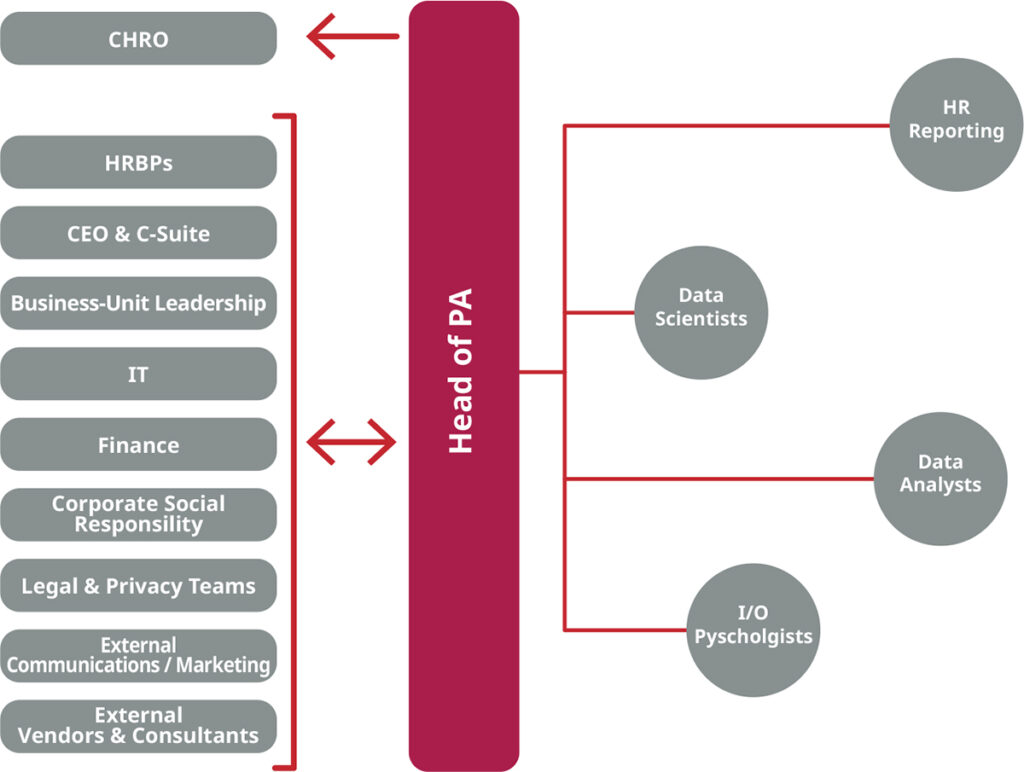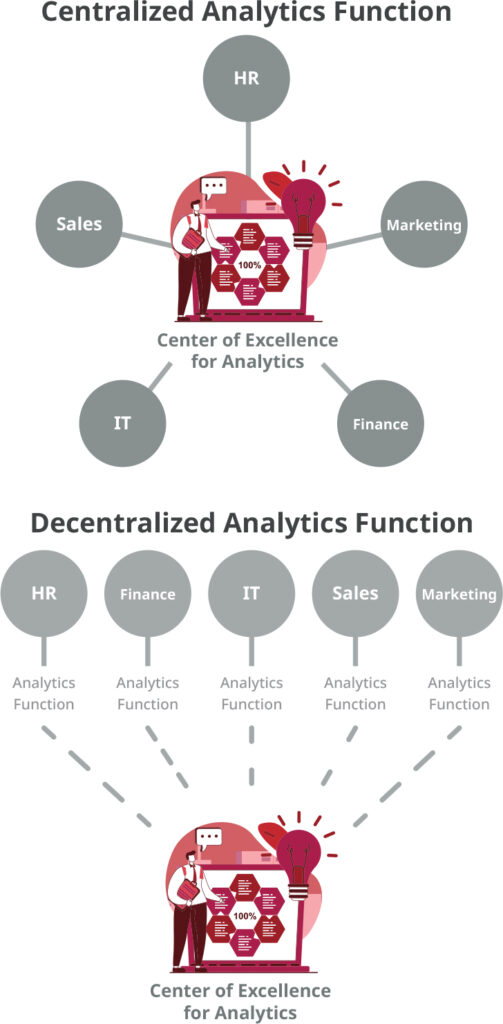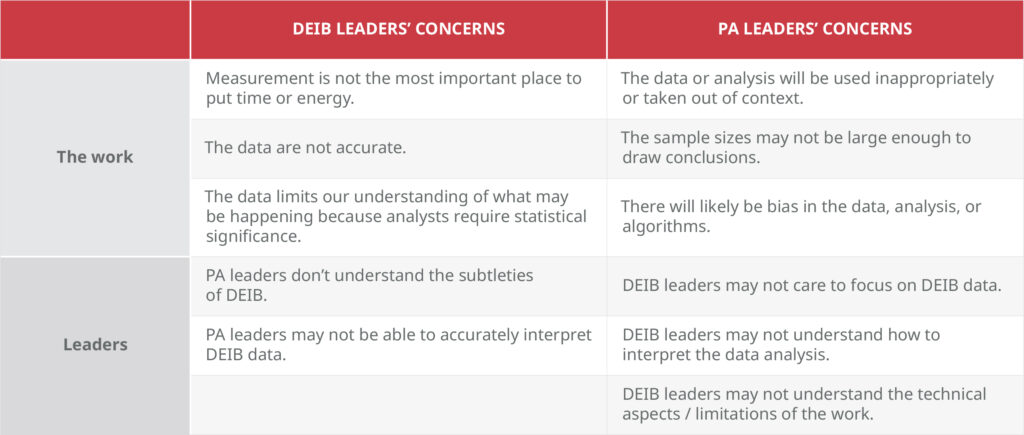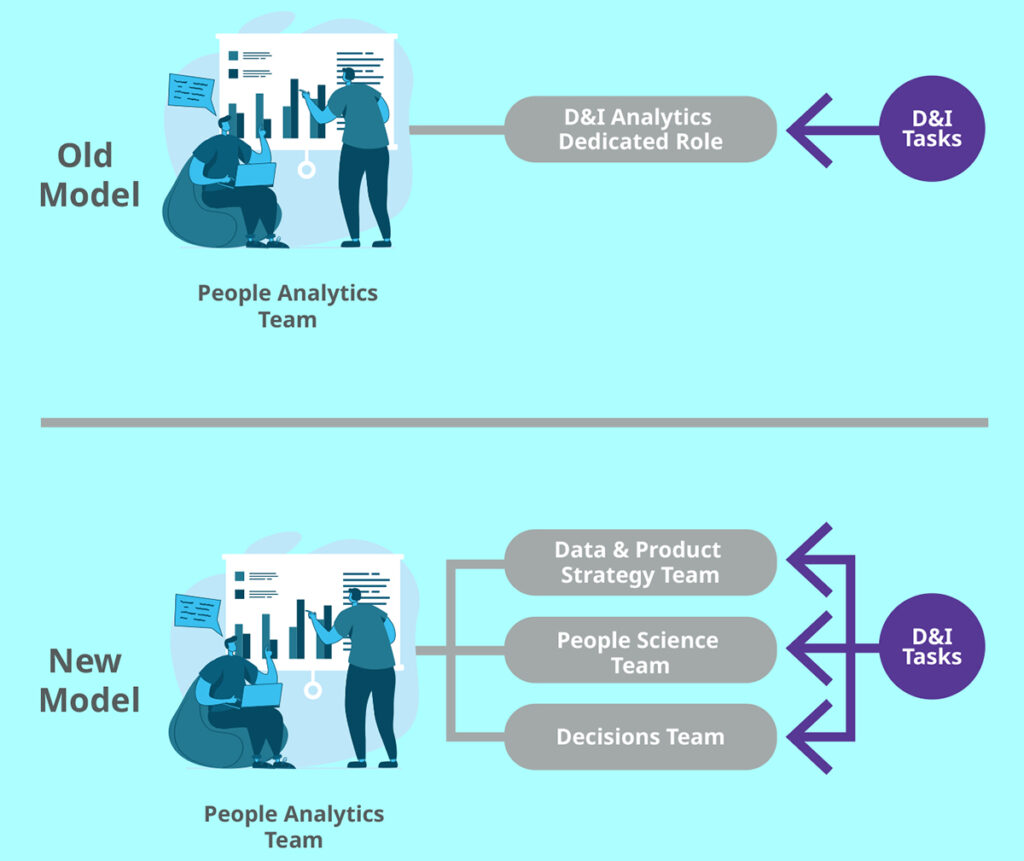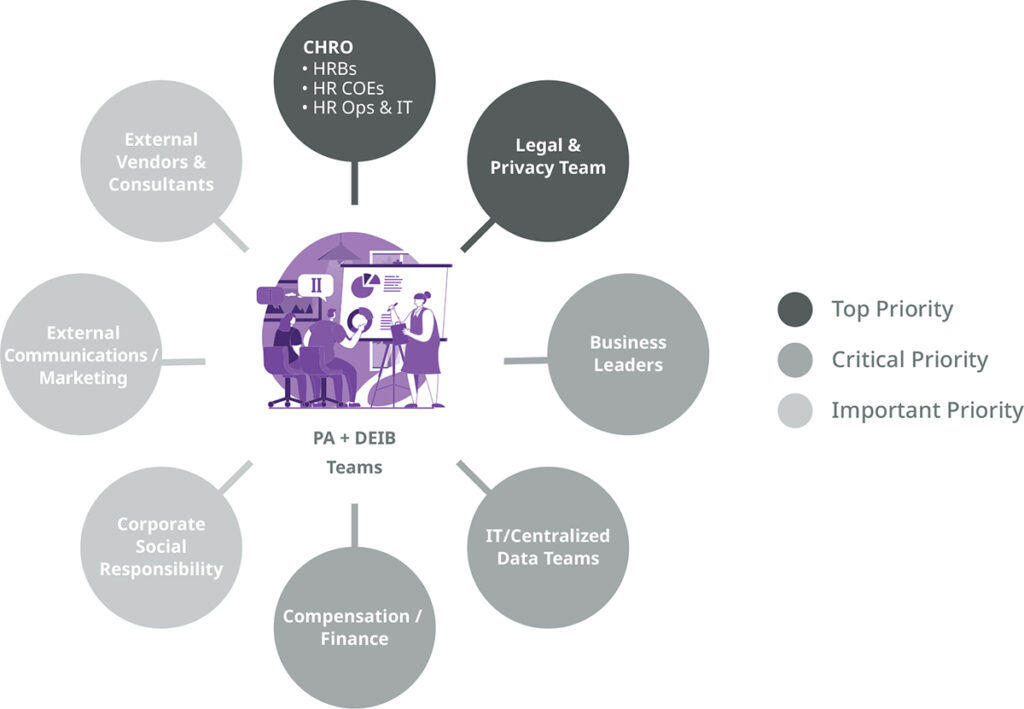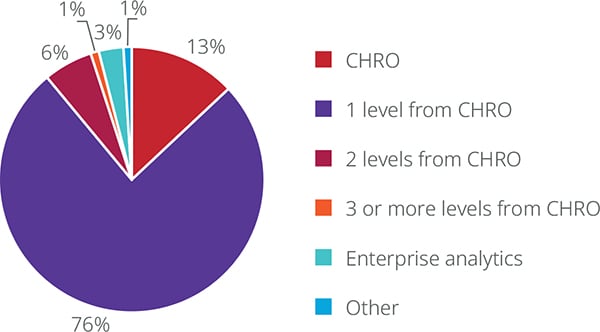Building a DEIB–Analytics Partnership: What DEIB & PA Teams Should Know to Partner Effectively
August 16th, 2022
Download This Research[/button]
Understanding the need for a DEIB–PA partnership
Why focus on the partnership between DEIB and people analytics (PA) leaders?
In the summer and fall of 2020, companies made big promises to improve diversity, equity, inclusion, and belonging (DEIB) in their organizations. At the time, one of our first questions was how organizations would show the progress made on those commitments. While DEIB metrics—measurements designed to understand DEIB—are the obvious answer, how to select, collect, use, and maintain those metrics isn’t so clear.
Thus, our research initiative on DEIB metrics and analytics was born. The first article in this series, “DEIB Analytics: A Guide to Why & How to Get Started,” provides leaders with a plan for how to begin using DEIB metrics and analytics. The second article, “DEIB Metrics: An Essential Guide,” provides definitions of what DEIB metrics are and how they can be used.
This third article in the series focuses on how DEIB and people analytics leaders should partner to identify, measure, maintain, and distribute those DEIB metrics.
Why write an article on this DEIB–PA partnership? For several reasons. As shown in Figure 1, the way that DEIB and PA leaders partner (or not, as in the early days) has changed substantially. PA is increasingly at the center of DEIB metrics efforts as organizations ensure that they have consistent data sets, analysis approaches, and contexts across the board. However, PA leaders shouldn’t do this work without the support of DEIB leaders—since DEIB brings an essential level of theory, nuance, and context to the data. By DEIB and PA leaders partnering, you can clearly and consistently:
- Define terms
- Identify consistent data sources and analysis approaches
- Appropriately interpret data
- Develop targeted and appropriate action steps
- Create ongoing accountability
The combined expertise of DEIB and PA leaders enables you to make all these things happen.
“People Analytics leaders can help answer questions that DEIB leaders didn’t even know how to ask.”
—Hallie Bregman, Owner, The Bregman Group
PA is increasingly central to organizations' DEIB metrics efforts
Despite challenges, there is a known path to partnership
While you should (in theory) collaborate, it doesn’t always seem intuitive for PA and DEIB leaders to work together in practice. Why is this?
- First, many DEIB and PA leaders have historically come from different perspectives, such as social justice for the former, and math or statistics for the latter.
- Second, your individual responsibilities often have very different. Many DEIB leaders, for example, are charged with creating community and connection—and taking a data-driven approach may not be prominent on your radar. By contrast, PA leaders primarily focus on data and measurement; your only experience with DEIB may be through their participation in DEIB-related initiatives.
- Third, your reporting relationships are often very This can result in a poor alignment of priorities and little insight into each other’s work, especially if either DEIB or PA is outside the HR reporting structure.
- Finally, the data used by DEIB in the past hasn’t necessarily been the same as that used by PA—making it more difficult to create alignment on even simple reporting.
All of this culminates in the challenges outlined in Figure 2.
A look at the causes and effects of challenges to DEIB analytics work due to differences between PA and DEIB leaders
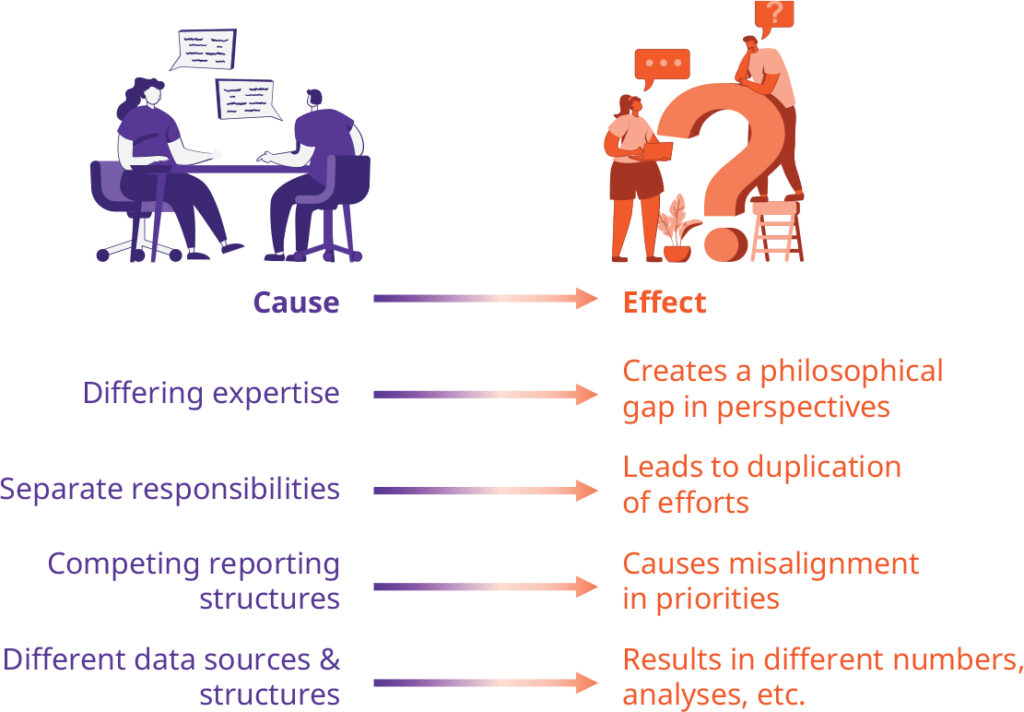
Figure 2: Differences between DEIB and PA leaders can impact the work | Source: RedThread Research, 2022.
Yet, our interviews revealed that common approaches could enable a strong DEIB / PA relationship to develop and thrive.
This article is designed to help DEIB and PA leaders better understand each other—and create a partnership that will enable you to succeed. We identify 3 components of an effective partnership in this article, outline the responsibilities of DEIB and PA leaders and provide specific examples of how to make this relationship more effective. We also provide a series of exhaustive checklists in the appendix to help you get started.
As always, our research is designed to accelerate good ideas within the people management field. Some of the concepts in this article may fit your organization’s unique circumstances, while others may not. Even better, some of these ideas may inspire new insights and approaches.
Whatever your reaction to the work, we’d love to hear about it. Please feel free to reach out to us at [email protected] with any insights, questions, or feedback.
“One of the biggest challenges to a successful DEIB and people analytics partnership is that most DEIB leaders don’t have technical backgrounds. As a result, there is a disconnect between diversity leaders and people analytics leaders.”
—Sean Fay, Co-Founder, The Context Factory
What is DEIB?
Before we dive into the heart of this paper, let’s start by defining what we mean when we say diversity, equity, inclusion, and belonging (see Figure 3). Everyone in your organization should be on the same page when it comes to understanding DEIB—which starts with a single, common set of definitions.
What are DEIB metrics?
Building on the information on the previous page, defining what we mean when referring to DEIB metrics is essential. Figure 4 provides specific definitions for, as well as examples of, metrics for each DEIB area. Everyone in your organization should be on the same page when it comes to understanding DEIB. After introducing a single, common sets of definitions for DEIB, you then need to define and differentiate the metrics for each of the 4 aspects of DEIB.
Building a DEIB—PA partnership
3 practices for building a DEIB–PA partnership
Our interviews with DEIB and PA leaders revealed several things they’re doing to build a successful partnership. We grouped our findings under 3 broad practices, with specific areas that leaders should consider when developing the partnership (see Figure 5).
- Understand your partner’s context. When starting a new relationship, you must understand how the other team operates. This involves becoming familiar with each other’s reporting and governance structures; specific concerns; priorities; and, responsibilities.\
- Form a DEIB–analytics partnership by aligning your objectives, responsibilities, and expectations. A partnership built on clarity around who is responsible for what, along with the overall goals, allows you to achieve greater alignment. This becomes easier with both of you supporting each other in your work, as well as among your teams and throughout the organization as a whole.
- Work together effectively within your organizational network. A successful DEIB–PA partnership is also a result of you both working together with other functions, teams, and leaders within the organization. Remember: You need to be strategic and tactical in building relationships with IT, business leaders, marketing, finance, and other functions to help ensure the success of your work and your partnership.
3 practices for DEIB and PA leaders to adopt to build a successful DEIB-PA partnership
Practice #1: Understanding your partner’s context
DEIB leader’s context: A primer
Before beginning any partnership, you must understand your partner’s circumstances. Let’s start with the DEIB leader’s context.
To start, you need to have a good understanding of the environments in which your DEIB leader works. For example, DEIB leaders typically have up to 5 different stakeholders: employees, customers, suppliers, communities, and shareholders.
Further, in many global organizations, DEIB leaders operate within a complex and demanding governance structure, an example of which is shown in Figure 6. All of these different groups require time with your DEIB leader and their teams. Note: HR—where PA teams often report—is just one of many constituents.
To help you understand your DEIB partner’s context, you should ask them the following:
- To what extent is working with DEIB your full-time or part-time responsibility?
- How big is the DEIB team?
- To whom do you report? How strong is that relationship? What other reporting relationships exist?
- What other resources (e.g., budget, indirect reports, external resources) do you have?
- What experience do you have in collaborating with PA teams on DEIB data?
DEIB leaders operate within a complex and demanding governance structure
PA leader’s context: A primer
Similar to DEIB, PA leaders also work in complicated situations.
As shown in Figure 7, PA leaders interface with various organizational stakeholders, while managing a team of technical experts. Their organizations also tend to have different governance structures (see Figure 8), impacting how they will work with DEIB.
To help you understand your PA partner’s context, you should ask them the following:
- To whom do you report? What other reporting relationships exist?
- What types of services and support does your team offer?
- How is your team structured? What are the types of expertise of the people within that team?
- How long has your team been doing their work?
- What other resources (e.g., budget, indirect reports, external resources) do you have?
- What experience do you have in collaborating with DEIB leaders on DEIB data?
“Our DEI group has great people, but I just don’t know if they are doing what we need right now and don’t know that they even have the skill set to do it. I don’t know how numbers-focused they are or how numbers-focused they should be. Right now, our DEI team is more like project management, focusing on things like benefits. They handle a lot of other stuff versus looking at data.”
—Global people analytics leader, international consumer packaged goods company
PA leaders interface with several organizational stakeholders while managing a team of external technical experts
Organizations often have one of these two types of governance structures for PA—impacting how PA and DEIB interact
“The combination of qualitative and quantitative data is ideal, but at the end of the day there is nothing that data will tell us that we don’t already know as Black people. I know what my experience was as an African-American man who worked for 16 years in roles that weren’t related to improving diversity. It’s as much heart as head in this work.”
Appreciate each other’s concerns
It’s one thing to understand each other’s contexts—but it’s another entirely to appreciate your partner’s concerns about working together.
Given the different silos DEIB and PA leaders often work within, it’s easy not to understand your partner and where they’re coming from. Based on our research, we’ve identified some common concerns each can have about the other (see Figure 9).
Be aware: This is a prime opportunity for you to lean in and address those concerns directly with your partner.
In some instances, it can require creating specific protocols or practices to address the concern, such as a standard expectation that new analysis will be reviewed by both partners. In other instances, it may need both groups to engage in certain situations together, such as when interpreting results with a senior HR business partner.
Some of these concerns will likely be addressed when you and your partner align on goals and objectives (we discuss this next). For other concerns, you both may need to acknowledge these exist, and then decide to address them on a case-by-case basis.
Some of the top concerns we heard from DEIB and PA leaders alike were regarding the work, as well as each other
Real-World Threads
Understanding your partner
One of the keys to building a good partnership is understanding the context within which your partner operates.
According to a PA leader we interviewed: PA leaders need to be aware that most DEIB leaders don’t have analytical training. Similarly, PA leaders often don’t understand the nuances and challenges associated with DEIB work. He recommends DEIB leaders be wary that the work can become all about the data—losing sight of the ultimate goal to drive DEIB—a potential danger if there’s no shared vision or established foundation for working together.
“ A lot of that came down to communications and getting clear on priorities and responsibilities.”
—PA Director, a global technology company
A similar sentiment was echoed by the global head of PA at a large tech company, according to whom the entire relationship boils down to communication. One of the things he did when he joined the company as PA Director was to identify why the existing partnership between the PA and D&I teams wasn’t working successfully. This was followed by trying to understand the goals they were trying to achieve together. Ultimately, the teams worked on:
- Gaining clarity around priorities
- Obtaining the help they needed to drive those priorities
- Defining the specific responsibilities on both sides
“The biggest challenge to building a partnership between PA and DEIB is understanding what you expect from the partnership. A lot of DEIB leaders call on PA when something is broken or needs to be explained to the senior leadership. PA needs to build on this dependency and get to a point where we are able to work together from the start.”
—Manager of PA & HR M&A, global logistics company
Some DEIB leaders, for their part, are often worried that the drive for statistical precision may overcome the intuition side of DEIB. Some of these leaders expressed concern that people in underrepresented populations might understate or purposely inflate information provided to focus groups because the level of trust is too low. In those instances, the data aren’t very helpful.
“Analysts must challenge the traditional minimum confident n, pushing themselves to look beyond the limited hard data. They don’t have to prove that the difference in performance ratings between blacks and whites is “statistically significant” to help managers understand the impact of bias in performance reviews … We may have to place a higher value on the experiences shared by 5 or 10 employees—or look more carefully at the descriptive data, such as head counts for underrepresented groups, and average job satisfaction scores cut by race and gender—to examine the impact of bias at a more granular level.”
—Maxine Williams, Global Chief Diversity Officer, Meta
Practice #2: Forming a DEIB–PA partnership by aligning on objectives, responsibilities & expectations
Identifying clear objectives
From the start, perhaps the most crucial item for DEIB and PA teams is to shift their mindsets from being 2 separate teams to being 1 integrated alliance—the DEIB–PA partnership.
While there doesn’t have to be any sort of official creation of a team (or even the naming of one!), these 2 groups must:
- Align around common objectives
- Share insights and learnings freely
- Think of themselves as each contributing equally to the DEIB metrics and analytics effort
To do this, start by ensuring everyone understands the organization’s people priorities for the year— and how those translate into DEIB and PA strategies and objectives.
From there, identify the common objectives and / or where enough overlap exists to articulate new common goals. Share this information broadly within and outside the partnership to enable a broader alignment of stakeholders.
While objectives aren’t always set or aligned at the beginning of the calendar year, it’s still essential for the PA and DEIB leaders to align—even if it means the 2 leaders discuss some hard questions about priorities.
Real-World Threads
Developing partnerships with new colleagues at a manufacturing organization
One PA leader we interviewed works for a leading electronics manufacturer. This leader shared with us how her company’s new D&I function hired an external consultant to look at the company’s people data—only to realize that it caused more questions than answers!
Switching into consulting mode, the leader and her team worked closely with the new D&I team to help them clarify their objectives, based on both the numbers and the organization's talent strategy. As this leader related to us,
“Take a step back. You have limited resources. You've got limited time to play the diversity numbers games. First, get your numbers right. Then figure out:
- Are we going after diversity?
- Are we going after inclusion?
- Are we going after equity?
What of these 3 things are you after because they are all very different.”
The leader and their team then aligned their DEIB efforts around those clear objectives. This helped everyone understand what was and wasn’t possible.
A stray red thread …
One of the more interesting trends we observed through our interviews is that many PA and DEIB functions started within their organizations around the same time or within a few years of each other.
We discovered an unexpected benefit of this: The functions could “grow up together” or lend insights to each other around how to navigate being a new function within the same organization.
This situation creates a cohesion and openness between the 2 functions. It also means that they’re more forgiving of mistakes each function makes, as they’ve recently experienced similar missteps.
If your DEIB and PA functions are about the same age, then some questions to consider include:
- How might my team share what we’ve learned about growing our influence within this organization?
- How can we help the other function with prioritization and growth?
- What can we learn from the other function about their journey to date?
Clarifying specific responsibilities
Another important part of the process of forming the DEIB–PA partnership is to clarify the specific responsibilities of the constituent teams. Figure 10 shows that some responsibilities belong to each group, while others are shared. Note: There may be more responsibilities than those outlined in Figure 11 and some of them could belong to different groups, depending on your organization’s structure.
After identifying the respective responsibilities, next you must put in place those practices or approaches that’ll codify how the shared responsibilities will be executed. For example, will the PA team first develop a list of data-related DEIB definitions and then run it by the DEIB team? And how will new data definitions be added?
Some of these process decisions may be determined by how the PA team supports the DEIB team (see the Uber Real-World Threads for an example). But many of these decisions won’t be, so you need a plan to make sure that all responsibilities are clearly delineated.
Breakdown of responsibilities for DEIB and PA teams individually, as well as those responsibilities shared by both teams
“But to discover the effects of bias in our organizations—and to identify complicating factors within groups, such as class and colorism among Latinos and others—we need to collect and analyze qualitative data, too. Intuition can help us find it. The diversity and HR folks described using their “spidey sense” or knowing there is “something in the water”—essentially, understanding that bias is probably a factor, even though PA doesn’t always prove causes and predict outcomes. Through conversations with employees—and sometimes through focus groups, if the resources are there and participants feel it’s safe to be honest—they reality-check what their instincts tell them, often drawing on their own experiences with bias.”
—Maxine Williams, Global Chief Diversity Officer, Meta
Real-World Threads
Dividing responsibilities to unite on action
At Workday, the Chief Diversity Officer (CDO), Carin Taylor, understands that the PA team is uniquely positioned to help the organization in many ways.
It all starts with data and insights. Specifically, the PA team can help by providing insights that lead to actions, followed by outcome measurements to track if the actions result in changes.
For example, Taylor shared that—through data collected via their belonging index—the PA leader helped her identify that the female Asian population was having a different experience at the company, as compared with other populations. By having access to these insights, the CDO and her team could act on them.
By creating a unique Journey for this population, Taylor and her team could see the difference that the actions made through improvements in the belonging index.
Having done this, the diversity team could then go back and ask themselves what else they could do to improve the experience of their female Asian population—making it an iterative and, equally importantly, an intentional process.
Creating a service-level agreement between partners
As part of identifying relevant responsibilities, the PA leader should put in place a formal service level agreement (SLA) for how PA will work with DEIB. It’s important to align expectations on what and when the PA team can deliver specific services.
Typically, SLAs should include:
- Services offerings. This describes the services provided, the conditions of the service availability (such as time window standards for different levels of service), responsibilities of each party, escalation procedures, and cost / service tradeoffs.
- Management approaches. This defines measurement standards and methods, reporting processes, and contents and frequency.
Some SLAs also include delivery metrics that are reported monthly or quarterly. While this is more common with external vendors, it can be useful for internal relationships—by creating a clear set of standards for the metrics that both parties can refer to if they’re dissatisfied with how things are going.
“When I took on the role of people analytics leader, the feedback we got from our D&I team was that the partnership was not working. The SLA was broken and there was difficulty understanding what the priorities were. The relationship was damaged on both sides, and we had to work on fixing that. Fast forward 3 years and it is one of our strongest and most collaborative relationships. Our D&I team is doing leading-edge work and has played a major role in our culture change at the company, and this has been driven by some really incredible analytics and tools from the PA team. Both our CDO and I would agree that we could not have done it without the other.”
—RJ Milnor, Global Head of People Analytics, Uber
Real-World Threads
How a global DEI director developed a solid partnership with PA
At a European multinational lighting corporation, the Global DEI director has built a partnership with the PA team founded on mutual respect and acknowledgment of the importance of the work. The
DEI team considers the PA team as the owner of the data—and the ones who can guide DEI on getting the most meaningful insights and usage from the data. In addition, the DEI team always publicly acknowledges PA’s contribution as DEI relies on their expertise in analyzing and synthesizing the data.
For their part, the DEI team acts as guide and coach for PA on such items as from where PA can get the relevant data and the value of integrating different data. The DEI team shares with PA the context around their request and how the data will be used.
Creating a system for ongoing alignment
DEIB and PA must have a system for ongoing alignment, particularly around requests made of the PA team.
In organizations with a centralized PA team, often a single location exists where requests are recorded before they are triaged to the relevant team or individual, according to the SLA.
“Alignment on the outcomes that you are trying to drive is one of the most critical components that make the partnership between people analytics and the Global Diversity & Inclusion team successful. Our CDO always appreciates insights the people analytics team provides.”
—Dawn Klinghoffer, Vice President of the HR Business Insights, Microsoft
In organizations for which a PA team member sits with the DEIB team, it’s still important to make requests transparent and formal. This enables broader insights into what analysis is being requested—and consistently requested analysis can be systematized. Additionally, the PA person can stay aligned to the broader goals, even if they don’t necessarily have complete visibility into them.
Whatever the exact scenario, PA and DEIB leaders should discuss requests and changes regularly. This communications flow between the partners supports the ongoing alignment of efforts to the highest priority work.
“You cannot get to decision-making without aligning on the basics first. It took 18 months to get us aligned on the definition of ‘headcount’. Unless there’s a single definition, we could not move to the next level of conversation.”
—Product Manager, a large technology company
Real-World Threads
Wayfair creates alignment between PA and DEIB
Wayfair—a U.S.-based e-commerce company that sells furniture and home goods online—was able to build a system to enable ongoing alignment between PA and DEIB.
The company hired a person for the role of DEI analytics at the same time as the first global head of DEI came onboard. This way, the company could ensure that the DEI strategy was data-driven from the start—and would underpin everything around DEI with deep insights.
Real-World Threads
Partnering to build a thoughtful approach
Having set ambitious goals for 2019-2020, Snap Inc., the parent company of Snapchat noticed that representation numbers stayed largely the same with underrepresented U.S racial groups in leadership roles. There was only a marginal increase from 13.1% to 13.6% among leadership roles. In fact, other areas, such as the number of Asian employees in leadership roles, saw a decrease in representation from 16.5% to 14.3%.
To improve its DEI numbers, the company began capturing an inclusive dataset from its team members.
The company leads with the belief that DEI needs to be weaved into everything it does. Additionally, Snap leaders see data as an essential tool to drive its DEI goals in the right direction.
However, with data collection come data privacy and security challenges, especially when gathering sensitive employee data. The company realized it needs to be thoughtful about the data it collects depending on the different contexts in varied geolocations.
The PA team partners with the DEI team, along with external cultural experts, to understand what demographic categories or groups they should consider in countries outside the U.S. That way they can ensure they’re being thoughtful when describing an “underrepresented” group, that’s actually underrepresented in that jurisdiction. Snap also includes information about LGBTQ+ status and first- generation college graduates in the Diversity Annual Report; previously these questions had only been asked in the U.S. The company recently started sending out the survey to those in Canada and Australia.
Due to the access to DEI insights, the company has built additional plans and created greater empathy around the work. It has also helped them to drive accountability mechanisms to create a more inclusive and diverse organization.
“There is a little bit of difficulty with collecting information in specific countries, and we have to be really careful about which questions we ask. We report on gender globally, but we report on race/ ethnicity only in the U.S. at this time. That’s one of the reasons that we’ve kind of slowly started to add on additional countries where we’re collecting that information, because we want to make sure that we get it right.”
—Kami Tillman, Head of Data Science and People Analytics, Snap
Supporting each other publicly
Another critical component of the DEIB–PA partnership: The 2 groups publicly support each other.
DEIB metrics are sensitive and subject to scrutiny. So, if DEIB and PA teams don’t present a united front with the data and insights, then it’ll be even harder to get other leaders to act on those metrics.
Some of the ways in which the DEIB–PA partners can communicate their cohesiveness to the organization at-large include:
- Presenting together at large-scale events (e.g., town halls and / or business unit-specific meetings)
- Writing internal articles, blogs, and / or participating in videos on DEIB metrics and progress on them
- Writing external articles and / or presenting together at conferences
- Collaborating on discussions with senior HRBPs and business leaders
Remember: DEIB and PA leaders should defer to their partner when questions are outside their expertise and / or responsibilities. In other words, both partners must have a clear understanding of each other’s strengths in order to be (and appear) collaborative.
Real-World Threads
Communication is key to the success shared by the DEIB and PA teams at Workday
In the beginning, even though the PA team members at Workday were involved in the DEIB work, they didn’t see themselves as the owner of the work. Over time, this changed.
The CDO is responsible for putting in place the VIBE (value, inclusion, belonging, and equity) strategy. The PA leader helps by providing the data, and measuring inclusion, belonging, and equity.
The back and forth between these 2 leaders has created a dialogue that allows them to explore ideas—so they are clear about where they currently are with the VIBE strategy and what progress they need to make. As a result, this successful partnership between DEIB and PA is less about the strategy they put in place—and more about the conversations and dialogues that allow them to explore ideas that make a real difference.
As Carin Taylor, Chief Diversity Officer for Workday, explained,
“Earlier it was all about the data, instead of the insights. The insights are so critical to be able to pull out stories and key points from the data to understand how we need to think about this. Our people analytics leader does a phenomenal job of thinking about the insights and piecing together information, which helps me be a better business leader.”
Real-World Threads
Aligning on priorities and creating a plan for working together
In the past, the PA team at Uber was built on a model that included a D&I-dedicated analyst as part of the team. Key challenges with that model included:
- The team couldn’t prioritize requests across the entire enterprise
- The work was tied to the capabilities of one individual
The company then adopted a new model by which the PA team is organized, based on 3 pillars (see Figure 11):
- Data & Product Strategy team handles information governance and product building
- People Science team comprises industrial organization (IO) psychologists and data scientists
- Decisions Science team acts as consultants / business partners and focuses on problem identification
The new model allows the D&I and PA teams to collaborate more effectively and efficiently. Once the PA team understands the priorities of the D&I team, they can leverage the 3 pillars to assign the appropriate resources to the work and to parallel process requests—which they couldn’t do with a dedicated analyst.
While the Data & Product Strategy team helps the D&I leader gather the correct data and insights, the other 2 teams work to ensure that the insights are turned into actions.
Another reason the DEIB and PA teams are aligned on their priorities: They’re part of the same people leadership team and report to the CHRO. This allows them to connect frequently and gives them visibility into each other’s work. The PA leader and Chief Diversity Officer work together to develop priorities by first identifying the org’s overall goals.
All of these factors have played a significant role in building a solid partnership between the two teams.
The new PA model enables better alignment of PA with the D&I function, allowing both to work together more smoothly and effectively
Practice #3: Working together effectively within your organizational network
A complicated web of relationships
While it’s incredibly important for DEIB and PA leaders to be aligned and work together effectively, they must also work well with the rest of the organization.
As shown in Figure 12 at least 8 different types of organizational stakeholders could be involved in the work of the DEIB and PA teams. Given this significant number of stakeholders, DEIB and PA leaders must be aligned to reduce confusion and conflict.
From our interviews, we have prioritized these relationships based on the impact and frequency with which DEIB and PA leaders need to work with these groups. Roughly speaking, we have put them into the following categories:
- Top priority. HR, and legal & privacy teams
- Critical priority. Business leaders, IT / centralized data teams, finance, and compensation
- Important priority. Corporate social responsibility, external communications and marketing, and external vendors and consultants
For the rest of this section, we discuss these different stakeholders and why they’re critical. We also outline how DEIB and PA teams can work with each group.
There are various stakeholders for DEIB and PA at differing levels of priority as represented by each stakeholder group
Top-priority relationship: HR
The most crucial relationship that PA and DEIB partners must navigate is with the broader HR function (see Figures 13 and 14).
When PA and DEIB both report to HR, the partnership is much easier—because both functions are aligned with HR’s overall goals.
Further, leaders of both functions have an opportunity to align themselves, so they can achieve those common objectives.
Conversely, it’s far more difficult when PA and DEIB report into different functions—because it becomes much easier to lack upward and horizontal alignment (between DEIB and PA).
In this situation, there’s a significant onus on the PA and DEIB leaders to understand the overall business and talent strategies—and then align their teams’ work to those broader strategies as well as to each other.
Regardless of the reporting relationship, DEIB and PA leaders must understand:
- The overall business and talent strategies
- The CHRO’s responsibilities when it comes to DEIB
- The needs of business units and functions that result from working with individual HRBPs
- How to collaborate with COE leads to integrate DEIB metrics into their work on talent practices
- What support is needed from HRIT to access critical people data
- How DEIB metrics and analytics can help HR operations teams be more effective
When it comes to driving the relationship with HR, both PA and DEIB teams should take equal responsibility.
PA teams should be responsible for identifying the metrics and processing requests, while DEIB should take the lead in influencing talent strategy and practices.
More than 80% of chief diversity officers (CDOs) report either directly to the CEO or CHRO

Figure 13: In the organization, to whom do CDOs report? | Source: DiversityInc. Best Practices, 2021.
More than 75% of PA leaders report one level below the organization’s CHRO
Top-priority relationship: Legal & privacy teams
Another critical relationship for the DEIB–PA partners is with the legal and privacy teams, a relationship for which they have equal responsibility in building and maintaining. It’s essential to collaborate early and often with these groups, especially given the sensitivity of DEIB data and variances of privacy laws among different countries.
Based on our interviews, we identified 3 different archetypes of legal and privacy teams (see Figure 15):
- “The less said, the better.” These leaders see their job as eliminating—as much as possible—any potential risk to the business. An effective way to get them to move on DEIB metrics and analytics is to work with senior business leaders to help these leaders see why this analytical work must be done.
- “I say no until you convince me to say yes.” These leaders see their job as shutting down any bad or poorly thought- through However, once DEIB and PA leaders develop a clear data collection, analysis, and distribution plan—with a clear business objective, these leaders can be swayed to support DEIB metrics and analytics plans.
- “I want to help you do this work safely.” These leaders are the ones that all DEIB and PA leaders hope they have. They understand the need for this work, may already have some experience doing it, and collaborate and brainstorm on safe, legal, appropriate solutions.
For example, while PA takes the lead in ensuring appropriate data are collected and shared, DEIB might educate and provide broader context around why it’s important to share the information
We’ve discovered 3 common types of legal and privacy teams that DEIB and PA teams find themselves working with in their organization
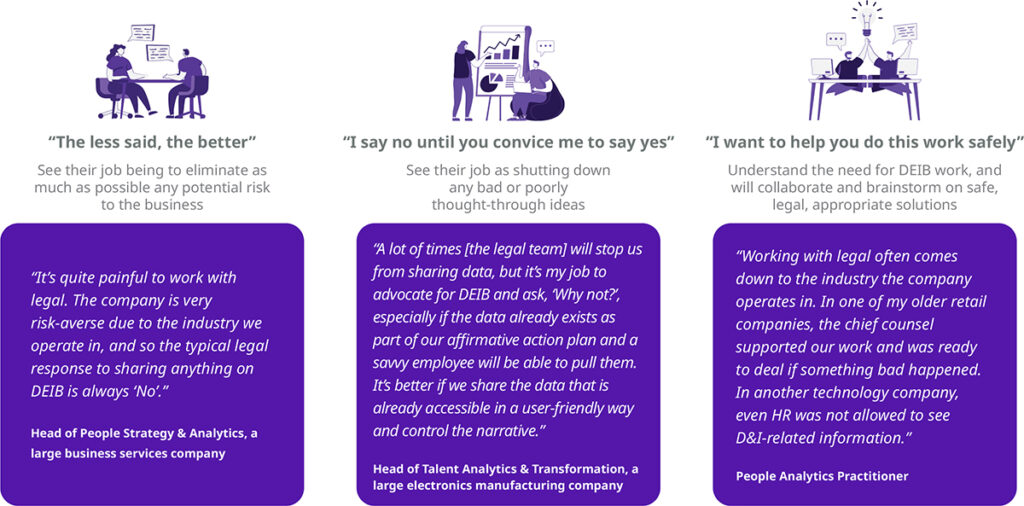
Figure 15: 3 common types of organizational legal & privacy teams | Source: RedThread Research, 2022.
Critical relationship: Business leaders
While the DEIB and PA team may be responsible for driving the quantification and interpretation of DEIB metrics and analysis—business leaders must be involved in this work since they (see Figure 16):
- Influence the practices that impact DEIB
- Need to understand the underlying logic of how DEIB is measured so they can encourage it
- May be held accountable for meeting DEIB metrics
- May be fearful of being held responsible for meeting DEIB metrics
Given this situation, DEIB and PA leaders must work with business leaders to understand their perspectives on the current state of DEIB in their part of the business.
Some business leaders are very interested in making progress on DEIB metrics, while it can be a bit of a “check-the-box” activity for others.
Understanding business leaders’ levels of interest in DEIB metrics is essential, so that the analysis and insights can be tailored to what they care about most. Some of our interviewees worked with those more passionate business leaders and developed truly insightful metrics that business leaders used to drive significant changes.
The point is: The person with the strongest relationship, who is most likely to get the business leader's attention, should lead the conversation.
When determining which team (DEIB or PA) will take the lead with business leaders, the decision will be very organization- and leader-specific. In some organizations, PA has the strong data-focused relationship with the business leaders, so bringing DEIB data into the conversation will be very natural. In others, the DEIB leader has a stronger relationship, so it might make sense for the DEIB leader to begin the conversation and then pull in the PA leader when necessary.
In other situations, it may be that the DEIB and PA leaders work with the senior HRBP, as that person has the relationship with the business leader regarding all “people topics.”
“It’s unlikely that a C-suite leader will come to people analytics with a tactical question. Most often, it’s a strategic question based on a business need. It is up to us to translate that into a research question, find out the answer through data, and translate it back into a data-driven story that provides clarity on the larger strategic issue.”
—Jeremy Shapiro, Executive Director, Workforce Analytics, Merck
Several reasons exist as to why business leaders are integral to DEIB analytics
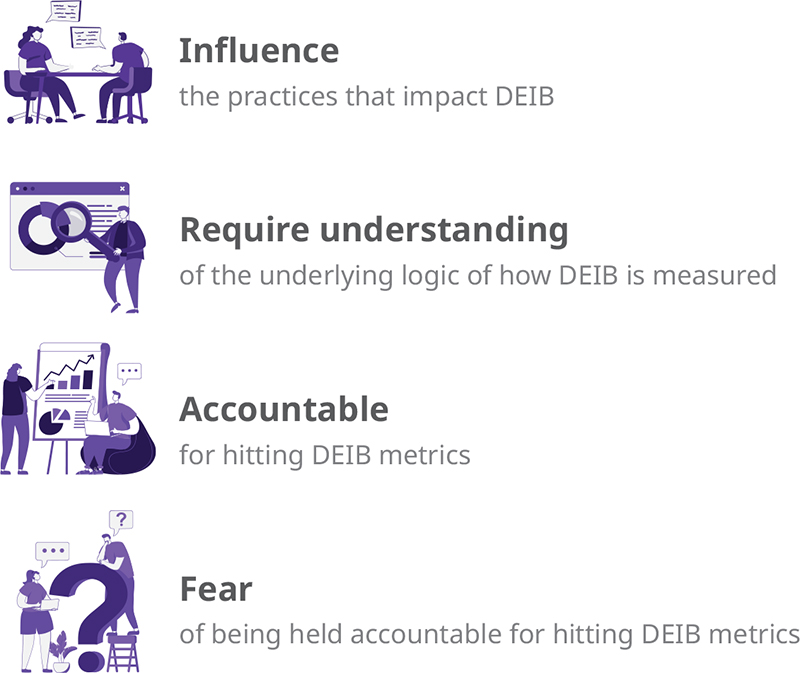
Figure 16: 4 reasons why business leaders are important to DEIB analytics | Source: RedThread Research, 2022.
“There is often a hesitation or reluctance on the leader’s part to open their doors to analytics due to fear that it might reveal some unpleasant findings about their business, which makes it hard to establish a good working relationship.”
—People analytics practitioner
Critical relationship: Compensation & finance
Let’s talk first about the compensation team, as this relationship especially matters when looking at pay equity issues.
Pay equity is one of the more approachable DEIB topics to address—meaning that it’s something the centralized organization can influence directly—and different geographies are enacting laws that require pay equity transparency.
Therefore, many organizations address it relatively early in their DEIB journey.
If DEIB or PA already has a working relationship with the compensation team, then it makes sense for that team to lead.
In terms of the DEIB and PA teams’ relationship with the compensation team, a few critical items of focus include:
- Ensuring the compensation data and other DEIB data are consistent
- Being able to put the results of the pay equity analysis into the context of other DEIB metrics and priorities provided to business leaders
- Collaborating with business leaders, compensation, and finance to determine the highest priority compensation adjustment actions
- Working with compensation and finance to identify and align any metrics that’ll be used in compensation decisions
Again, which group (DEIB or PA) leads the relationship with the compensation team will depend on the existing relationships in place.
Turning to the relationship with finance, it’s almost a certainty that the PA team will have experience working with that team due to their other responsibilities.
However, if neither has such a relationship in place, then it makes sense for PA to lead the discussions—as PA leaders are often already well-versed in compensation technicalities and will probably be able to get to the appropriate analysis faster.
“ We were reporting to the C-suite when the CFO made it clear that they did not see any value in our report. Once we walked them through it, the CFO was amazed at the insights and told us that it was a rich discussion. Once we were able to show the value, they became highly engaged in our work.”
—People analytics practitioner
In this vein, the PA team should (with input from the DEIB team) focus on actions, such as:
- Aligning on critical data sources and ensuring data / analysis consistency
- Showing the financial impact of DEIB when needed
- Putting a monetary value on DEIB events / initiatives
“For our CFO, is gold. He is using people analytics to understand what’s on the horizon and if they can forecast better, based on the human capital data. We actually built a CFO dashboard for him. It’s a great relationship to have because he does not see people analytics as a service function. It’s very much a partnership of equals.”
—Head of global people analytics, multinational consumer products company
Critical relationship: Centralized IT & data operations
Centralized IT and data operations teams are important to the DEIB–PA partnership because they can help:
- Access centrally managed technologies and data
- Identify and provide access to novel data sources
- Troubleshoot technical or data-related difficulties
- Share novel data collection, analysis, and distribution practices
From our interviewees, we heard 2 common challenges when it comes to working with centralized IT and data operations (see Figure 17):
- Trust. Many organizations haven’t historically had a data-led PA or DEIB function, so they’re not accustomed to accommodating requests for access to centralized systems or data. Therefore, requests for support are usually met with suspicion.
Typically, organizations get around this by leveraging senior leaders who can provide a rationale, or by showing the type of work done in the past and how it was used. In addition, providing information on data privacy and security often help.
- Time. Many IT projects were put on hold during the pandemic, and centralized IT and data teams were overwhelmed. Teams have been managing this by reducing project scopes to the most necessary items, finding other resources who could do some of the work, and / or leveraging senior leaders to help with the reprioritization of work.
PA leaders should take the lead—with DEIB’s input—when it comes to driving the relationship with IT and data operations.
The PA team should:
- Share information on how data and technologies will be used to reduce hesitations and fear about data sharing
- Showcase the broader impact of the work on the business overall
- Find additional resources when IT lacks the bandwidth
Time and trust are 2 common challenges experienced by DEIB and PA teams when working with IT and data operations
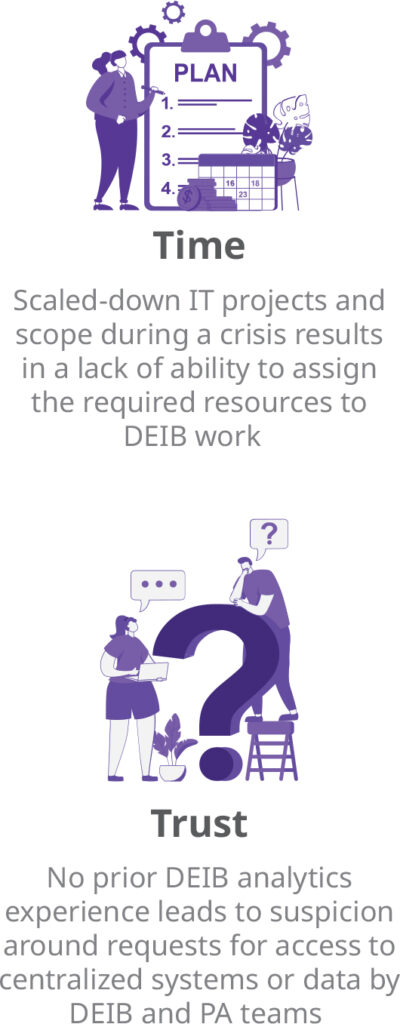
Figure 17: 2 common challenges in working with IT & data operations |Source: RedThread Research, 2022.
Important relationship: Corporate social responsibility
The next set of relationships concerns how DEIB metrics and analytics are shared outside the organization. Many companies include DEIB efforts within their corporate social responsibility (CSR) efforts. As a result, communication with that team on appropriate DEIB metrics—some of which may end up in an annual CSR report—is essential.
But there’s more to it than that. As noted in this article by Dr. Rohini Anand, the well-known former Chief Diversity Officer of Sodexo, DEIB and CSR are often working toward similar goals but from different perspectives:
“… We sometimes approach the same goal from different starting points. Take gender equality. We both want it, but D&I might focus more on recruitment and leadership, whereas CSR might focus more on community empowerment. These can seem like different goals, but they are, in fact, merely different approaches to the same end: improving quality of life.”
To that end, it’s essential for DEIB to take the lead in driving this relationship to understand CSR’s goals, and to align the DEIB metrics and analytics approach to support those goals as much as possible. For many organizations, this relationship will likely build over time, with some initial, relatively “easy” shared metrics at the beginning and more complex metrics with time.
The point is to work across organizational silos and to align on a standard set of measurements and approaches. Without this, CSR and DEIB will look poorly in front of business leaders.
The PA team can serve as a subject matter expert (SME) on the appropriate metrics that’ll serve the purpose of both CSR and DEIB. Also, as the relationship between DEIB and CSR matures, PA can be brought in to identify the next-level or more complex metrics, and how they should be shared.
Real-World Threads
Portland Trail Blazers leverage CSR team to inform community engagement efforts
An example of a successful partnership with the CSR function comes from Portland’s professional basketball team, the Trail Blazers. In 2016, the team’s leadership made a commitment to advance DEI within and outside its organization. The team’s leadership understands that DEI should inform not only their internal culture-building initiatives, but also their external community engagement efforts.
To that end, the organization inaugurated an Equity Team that, over the course of 18 months, convened 7 executive-led strategic planning committees to craft a new approach to their DEI and CSR initiatives.
“Both D&I and CSR, fundamentally, are about reaching out to disenfranchised communities, bringing new market insights to the table, and driving collaborative solutions to business challenges. They are also both skilled at helping the business to understand new, broader definitions of success that will be relevant for the evolving marketplace.”
Important relationship: External communications & marketing
While your organization’s CSR team may share some DEIB metrics externally, it’s fairly certain that your external communications and marketing teams will be very involved in any external communication efforts (see Figure 18).
Some organizations release a dedicated DEIB report that needs to be developed in conjunction with the external communications and marketing teams. Others involve the external communications and / or marketing teams when communicating about DEIB metrics in financial reports or other situations.
While these are very pragmatic ways the DEIB–PA partnership may well engage with the external communications and marketing teams, much more possibility exists in this relationship. These teams:
- Are experts in understanding how to tell stories effectively—meaning they could be beneficial to the DEIB and PA teams as they work to creditably tell stories based on data
- Can share resources that might be useful in communicating about DEIB, such as this Diversity Style Guide
- Can also give some larger context to other critical messaging, both within and outside the organization
The relationships with external communications and marketing can provide DEIB and PA with opportunities to tie some of their own messaging to these more prominent topics. This insight can also serve as a starting point for identifying new data types and analyses that the DEIB and PA teams might want to use in the future.
DEIB should take the lead in working with external communications and marketing teams.
As the “natural” owner of DEIB work, DEIB leaders are responsible for crafting the story and messaging around the insights and how they tie to the broader business goals. On their end, PA leaders should help by:
- Providing DEIB leaders with the insights that shed light on the progress of the organizational goals
- Ensuring that the metrics are interpreted and reported accurately
- Answering questions that arise from the external communications and marketing teams
5 ways external communications and marketing teams can help DEIB and PA teams in their work
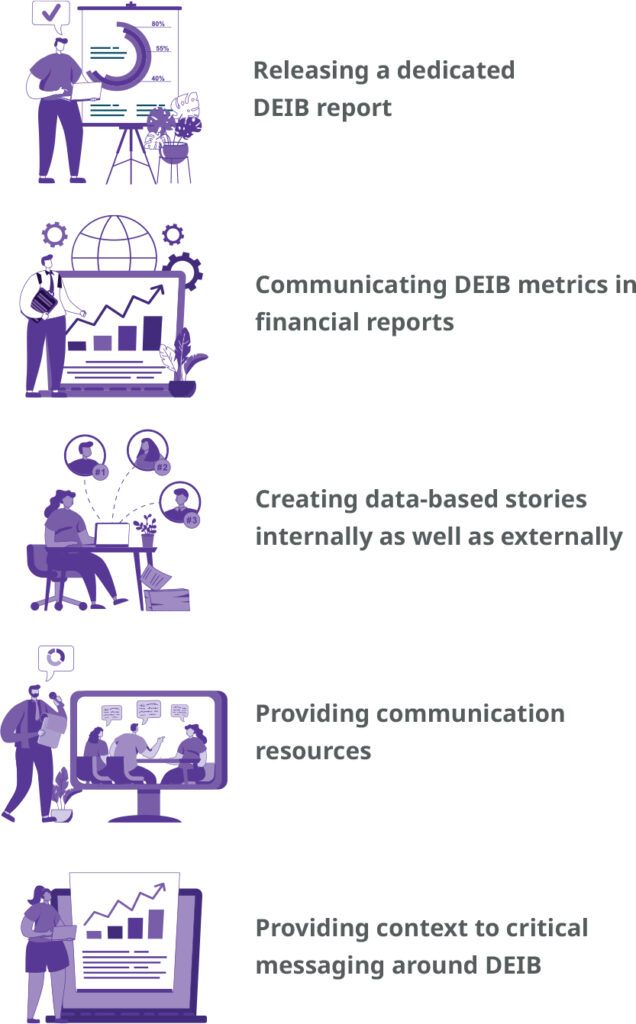
Figure 18: Examples of how external communications & marketing can help DEIB and PA teams | Source: RedThread Research, 2022.
Important relationship: External vendors & consultants
Many organizations turn to external vendors and consultants when they need:
- An external review / perspective on DEIB metrics
- A separate party to do data collection and analysis so as to maintain privacy / independence
- More bandwidth to complete data collection / analysis / recommendations
- Specific expertise / insights
It’s essential to consider whether the external vendor / consultant relationship will be short- or long-term in nature. Due to the sensitivity of the data, this is especially important to consider with DEIB metrics and analytics.
- Shorter-term contracts may mean the DEIB and PA teams limit the data shared to reduce some of the risks to the
- Longer-term relationships may require some additional data privacy and security
In addition, it’s crucial to get the most relevant internal teams aligned on the reason for bringing in the external vendor / consultant and the scope of that party’s work. We’ve heard of way too many instances in which DEIB practitioners brought in external consultants to do DEIB metrics and analytics work without any consultation with the PA team. As a result, the work effort was wasted because the external team lacked adequate data or nuance to interpret the data in a meaningful way.
While DEIB leaders might often find themselves leading the work when it comes to working with external vendors and consultants, DEIB and PA leaders must work together and take equal responsibility.
Given the long-term nature of identifying, measuring, and distributing DEIB metrics, you must have everyone aligned on the work being done and who’s doing it. This is one of the areas in which it makes sense to go slow in moving forward.
“The DEI team hired a vendor for reporting. The team would send the vendor our SAP data and the vendor would send it back to us in some kind of a format that would be used for reporting. Looking back we can see that the numbers and reporting were very inconsistent.”
—Global People Analytics Director, a multinational consumer products company
You should partner closely to make sure:
- The services and technology offered are truly needed, and aren’t already being done in-house or by previously purchased tech
- A plan is in place as to how the data and findings from the consultant will be used
- Clarity exists around who is ultimately responsible for driving and implementing the recommendations and actions that come out of the review and analysis
“I see people analytics departments outsourcing DEIB analysis to external consultants, who will run multivariate regression models and provide independent assurance. The outcome often shows no significant bias. Well, of course, because there is no policy to pay people differently! I wish DEIB leaders would analyze potential bias in all the moments that matter. Then they will really see what’s happening.”
—Dirk Jonker, CEO and Founder, Crunchr
Next steps
Getting started
Now that you’re familiar with the practices required for a successful DEIB–PA partnership, what should you do next?
The 3 practices should be embedded as part of the broader strategy for both PA and DEIB teams. Here, we offer a few steps that you—as a DEIB or PA leader—can start taking immediately.
Step 1: Do a quick audit of where things currently stand between DEIB and PA with the organization. Some of the questions to help you do this include:
- Is there a formal partnership between DEIB and PA within the organization?
- Does leadership support the relationship if it exists?
- How often do DEIB and PA leaders interact or meet?
- Does senior leadership understand and value PA's role in DEIB?
Step 2: Identify the gaps and build on the practices. Determine the areas in the partnership that need attention and which of the 3 practices discussed earlier should be leveraged. Think through the following questions:
- Do DEIB and PA leaders have a clear line of sight into each other's work?
- Is there clarity between the 2 teams regarding responsibilities and expectations?
- Do you have in place an intake process for DEIB requests, data sharing, and communication of insights?
- What other relationships do DEIB and PA teams need to leverage within the organization?
Step 3: Communicate and share broadly the work you are doing together. Sharing your successes and lessons learned within the partnership is essential to supporting each other. Think through the following questions to understand how you can get started:
- How are we currently sharing our work with others in the organization?
- Is our senior leadership aware of our work's impact on the organization?
- Are there external opportunities we can leverage to showcase our work?
- Are we leveraging resources (e.g., community groups and other industry leaders) to get feedback and insights on what else we should be doing?
We also provide a series of exhaustive checklists for each of the 3 practices in the appendix. Use them as a "grab-and-go" list of actions to start building your own successful DEIB analytics partnership.
“There are people who partner with people analytics reluctantly because they need data, and then there are others who want to work with them and use their brain. Diversity leaders should strive to be in the latter group because only then will they gain the insights needed to be successful in their work.”
Chief Diversity Officer, a global retail company
Final thoughts
Over the last 2+ years, many events, trends, and changes have thrust DEIB and PA into the spotlight. While they may be on the stage together, these 2 teams have very different backgrounds and don’t always have the “chemistry” they need. Yet, they must play their respective parts to help organizations through these unprecedented times.
We discovered from our research 3 critical practices which DEIB and PA teams should do to build the kind of partnership that will allow them both to flourish:
- Understand each other’s contexts
- Build a plan for partnering
- Manage the complex organizational network together
By doing these things, PA and DEIB leaders can partner effectively to deliver high-quality DEIB metrics and analysis to their organizations. This partnership will enable organizations to make higher-quality, data-backed decisions that ultimately impact millions of lives.
We strongly encourage you to complement this study with our previous study on DEIB analytics: DEIB Analytics: A Guide to Why & How to Get Started and DEIB Metrics: An Essential Guide. If you still have questions, please reach out. We love to learn from you.
Note: for Appendices, including research methodology, and checklists for getting started please download the PDF report.

Stacia Garr

